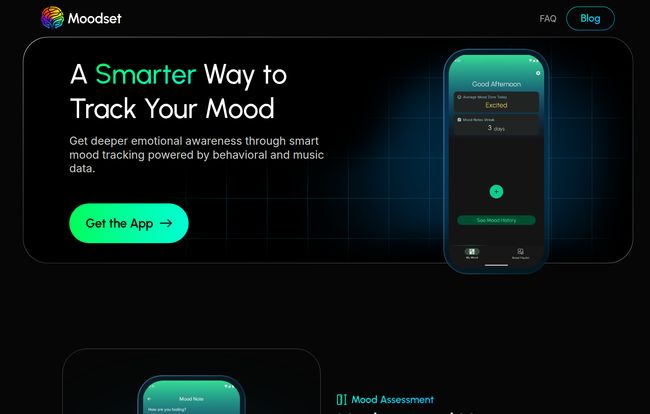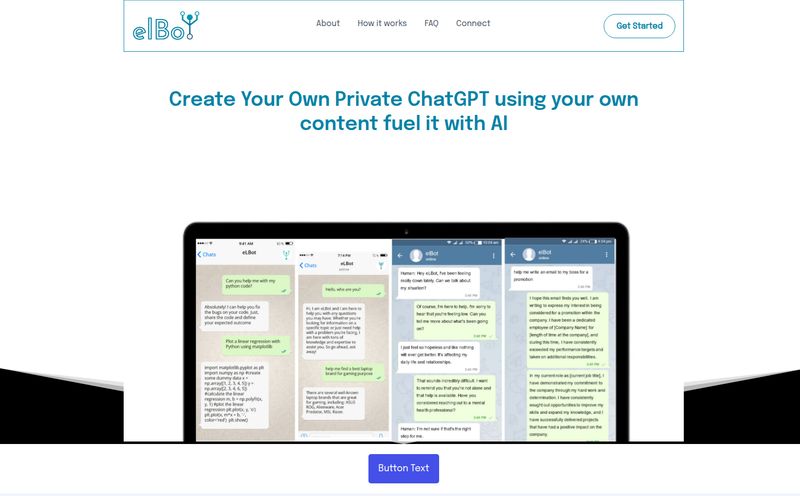I’ve been in the digital marketing and trends space for a long time. I’ve seen countless apps launch with big promises to “revolutionize” our lives. Most of them are just flashes in the pan. So when I heard about Moodset, an app that claims to track your emotional well-being by analyzing your music, my professional skepticism kicked in. But the music lover in me? He was intrigued.
We all do it, right? Feeling down, you put on that one sad, rainy-day playlist. Feeling on top of the world, you blast that high-energy anthem. Music and emotion are tangled together in a way that’s both obvious and mysterious. Moodset tries to map that connection. And I have to say, it’s a more interesting take on mental wellness than just another digital diary.
So What Exactly is Moodset?
Okay, let's get the techy stuff out of the way. At its core, Moodset is a mood tracking app. But instead of just tapping a smiley face or writing “had a bad day,” it asks you to place a dot on a map. This isn't a world map, but a mood map. It’s based on a two-dimensional model that psychologists use, which sounds complicated but is actually super intuitive.
Think of it like a compass for your feelings:
- The North-South axis is for 'Arousal' or energy. Are you feeling amped up and energetic (North) or sleepy and lethargic (South)?
- The East-West axis is for 'Valence' or pleasantness. Are you feeling pleasant and happy (East) or unpleasant and grumpy (West)?
So, feeling excited and joyful puts your dot in the top-right quadrant. Feeling anxious and stressed? Top-left. Calm and content? Bottom-right. You get the idea. It’s a far more nuanced way to log an emotion than just “happy” or “sad.” It captures that weird feeling of being tired but content, or jittery and miserable. It's a pretty slick setup.

Visit Moodset
The Music Connection is Moodset's Secret Sauce
Here’s where it gets really cool. Moodset doesn’t just rely on you logging your feelings. It automatically and passively tracks the music you’re listening to in the background. It then analyzes that music—the tempo, the key, the energy—to guess its emotional tone.
The app then overlays this data with your manually logged moods. They call it “Connect the Dots,” and it’s a genuinely insightful feature. You start to see patterns you’d never notice otherwise. It's like having a friend gently point out, “Hey, I notice you only listen to The National on Tuesdays… you doing okay?” It’s a subtle, powerful mirror reflecting your subconscious choices back at you.
A Look Inside My Experience with the App
I used Moodset for a couple of weeks to see if it was more than just a gimmick. Here’s the breakdown of what I found.
Charting Your Emotional Journey
The mood history screen is where the magic happens. You get these clean charts and timelines showing your emotional journey. For me, the 'aha!' moment came when I saw a clear dip in my energy and mood every weekday around 3 PM. I hadn't consciously registered it, but the app data was undeniable. Turns out, that’s when I was subconsciously putting on a lot of lo-fi beats, probably to cope with the afternoon slump. Seeing it visualized gave me a nudge to maybe take a walk instead of just wallowing in chillhop.
Playlists That Actually Seem to Get You
This was the feature I was most skeptical about. The app suggests playlists to help “regulate” your mood. If you’re feeling anxious, it might suggest calming ambient music. If you’re feeling sluggish, it might offer something more upbeat. It’s a proactive approach, which I like. It’s not just about tracking the problem; it’s about offering a potential tool to help. The suggestions weren’t always perfect—sometimes you just want to listen to sad music when you’re sad—but they were often surprisingly thoughtful and a good way to break out of an emotional rut.
A Quick Word on Privacy (Because It’s a Big Deal)
Let’s be real, an app that tracks your emotions and music habits has access to some seriously personal data. In an age where our data is sold to the highest bidder, I’m incredibly wary. I was genuinely impressed with Moodset’s approach here. They make a big point about on-device protection, encrypted connections, and server security. Most importantly, they give you a clear and easy way to delete your account and all associated data. For a mental health app, this isn’t just a feature; its a fundamental requirement, and they seem to get that.
The Good, The Bad, and The Realistic
No app is perfect, and Moodset is no exception. It’s a tool, not a cure. What I loved was the ease of use and the passive data collection from my music. It felt less like a chore and more like a discovery process. The visualizations are genuinely helpful for spotting trends you'd otherwise miss.
On the flip side, you have to be consistent. If you only log your mood once a week, you’re not going to get meaningful insights. It's an investment of time, even if it's just a few seconds a day. Also, teh algorithm that detects a song's mood isn't foolproof. It once flagged a high-energy punk song as ‘angry’ when I was feeling totally euphoric. But that’s a minor quibble. It gets the general vibe right more often than not.
So, What Does Moodset Cost?
This is the million-dollar question, isn't it? As of this writing, I couldn't find a clear pricing page on their website. This often means the app might be running on a freemium model (a free version with an optional paid upgrade for more features) or it might still be in an introductory phase. My advice? Head to your device’s app store and check the details there. That'll be the most up-to-date source of information on any costs.
Is This App Right for You?
If you're a data nerd who loves self-reflection, absolutely. If you're a music obsessive who's curious about the 'why' behind your playlists, you'll probably love this. It’s for anyone looking for a more detailed and less demanding way to check in with themselves.
However, and this is crucial, Moodset is not a replacement for professional mental health support. It’s a self-awareness tool. A companion. It can help you understand your patterns, but it can’t provide a diagnosis or therapy. Please use it as a supplement, not a substitute, for real medical advice.
Final Thoughts
I came in skeptical, but I’m walking away pleasantly surprised. Moodset is a thoughtfully designed app that offers a unique and genuinely useful angle on mood tracking. By tying our emotional states to the universal language of music, it creates a more holistic and, frankly, more human picture of our inner lives. It won’t solve all your problems, but it might just give you a better map and a custom-made soundtrack to navigate them. And in this noisy world, that’s a pretty valuable thing.
Frequently Asked Questions about Moodset
- How does Moodset track my mood?
- It uses a two-axis mood map. You place a dot on the map based on your energy level (high to low) and how pleasant you're feeling (pleasant to unpleasant). This allows for a more detailed emotional log than simple categories.
- Does Moodset work with Spotify or Apple Music?
- The app is designed to automatically track your music listening habits. This generally means it can integrate with the default music players on your device, which would include major streaming services like Spotify and Apple Music, to analyze what you're listening to.
- Is my personal data safe with the Moodset app?
- Moodset emphasizes user privacy. They state that they use on-device protection, server security, and encrypted connections to keep your data safe. They also provide a clear option for you to delete your account and all your data at any time.
- Is the Moodset app free to use?
- The pricing isn't explicitly stated on their website. It's likely a free app with potential in-app purchases or a subscription for premium features. The best way to know for sure is to check its page on the Apple App Store or Google Play Store.
- Can Moodset replace going to therapy?
- No, absolutely not. Moodset is a tool for self-awareness and personal insight. It is not a substitute for professional medical advice, diagnosis, or treatment from a qualified therapist or counselor.
Reference and Sources
- Moodset Official Website (Note: A placeholder link as the actual URL might change)
- Juslin, P. N., & Sloboda, J. A. (Eds.). (2010). Handbook of music and emotion: Theory, research, applications. Oxford University Press.



